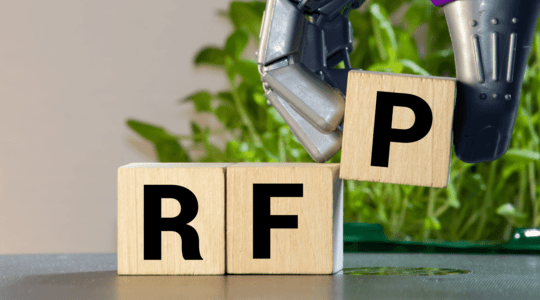Companies tend to engage in a request for information (RFI), request for quote (RFQ), and request for proposal (RFP) processes to make sure they end up choosing the right software that meets their business and IT requirements. However, I believe there is a major drawback in this traditional process that ignores today’s fundamental improvements in technology and the need for higher speed in business decisions.
Basically, my premise is that the time and money spent to run a lengthy RFI/RFQ/RFP process for a SaaS solution is not worth the investment.

Traditionally, well-run RFI and RFP processes try to reduce the risk of deployment failure for the buyer via questions and a demo, and sometimes a proof-of-concept study with made-up data. However, Project Management Institute (PMI) reports that 14% of IT projects fail outright before completion, 31% fail to meet their goals after completion, 43% exceed their budgets, and 49% are late.
Simply put, the RFI/RFQ/RFP process does not fit with the realities of the SaaS business model.
Here are three reasons why:
1) The risk approaches are entirely different
The traditional RFI/RFQ/RFP approach does nothing about the risks of actual data quality, integration scalability nor the change management issues that are likely to be barriers to deployment success. For risk mitigation, SaaS companies offer a Test-and-Learn (T&L) approach. At Solvoyo, we define a T&L as a funded project with a limited-and-meaningful scope that uses actual planning workflows, and exchanges data with critical data sources on your own digital platform, all within 3-4 months. A well-run T&L removes all onboarding risks due to return on investment (ROI) estimates, data quality, and integration scalability. Furthermore, it exposes process change issues and change-management requirements to increase the chance of success of any IT project.
2) It takes valuable time
The business speed in e-commerce, omnichannel retail, CPG, and first-tier suppliers has increased, while contemporary technology makes it much easier to complete an onboarding exercise. SaaS companies build and maintain industry-specific processes and data templates that obviate several months of data integration, digital platform design, process design, and alignment among the three. At the time it takes to complete a comprehensive RFI/RFP process, you can go live with a meaningful Test-and-Learn.
3) The payment structures make traditional ROI calculations obsolete
T&L or actual onboarding investments are much lower than their traditional counterparts. In reality, straightforward ROI on a SaaS solution is much faster; most likely months as opposed to years. It really makes no sense to force a comparison of investment options between a SaaS platform and a traditional on-premise option by assuming parameters that are irrelevant for a SaaS business, e.g., an assumed duration for the life of an IT investment, frequency of software releases, and annual maintenance fees. The SaaS business model does not require a multi-year commitment or upfront hardware investment. A true cloud-native SaaS business with multi-tenant architecture provides smooth and seamless upgrades, and maintenance happens incrementally; most important of all, they occur at the speed of business.
If you are still planning to spend time and money to run a lengthy RFI/RFP process for a SaaS platform purchase, then we suggest you think twice. We believe T&L is the obvious choice for optimizing the purchase process for a true SaaS solution!
We welcome kind agreements and non-violent disagreements, so please feel free to share them with us.
You can also book a meeting using this link.









